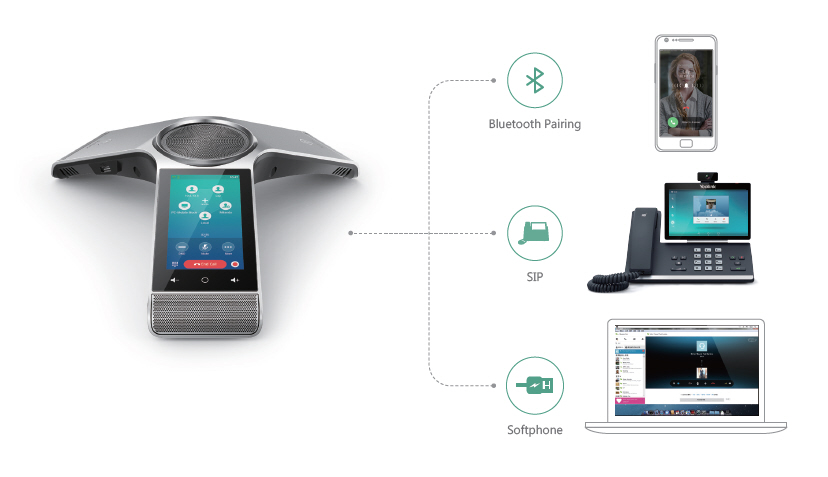Video conferencing has become an essential tool for businesses, especially as remote work and distributed teams have gained prominence. With the rise of VoIP (Voice over Internet Protocol) phone systems, integrating video conferencing features into your communication strategy can enhance collaboration and engagement among team members. In this article, we'll dive deep into how to leverage video conferencing features in your VoIP system effectively.
What is a VoIP Phone System?
A VoIP phone system refers to a technology that allows users to make voice calls using the internet instead of traditional telephone lines. By converting audio signals into digital data packets, VoIP systems facilitate real-time communication over the internet. This shift has led to increased flexibility, reduced costs, and enhanced functionalities.

Benefits of Using a VoIP Phone System
Cost Efficiency: Traditional phone services often come with high fees, especially for long-distance calls. VoIP significantly reduces these costs.
Flexibility: Users can make and receive calls from anywhere with an internet connection, making it ideal for remote workers.
Advanced Features: Many VoIP phone systems come equipped with features like call forwarding, voicemail-to-email transcription, and importantly, video conferencing capabilities.
Scalability: Businesses can easily scale their operations by adding more lines or features as they grow without significant investments in infrastructure.
Understanding Video Conferencing in VoIP Systems
What is Video Conferencing?
Video conferencing is a technology that enables individuals or groups to conduct face-to-face meetings over the internet through video-enabled devices. It helps bridge the gap between physical distances by allowing participants to see and hear each other in real-time.
The Role of Video Conferencing in Business Communication
In today's fast-paced business environment, effective communication is crucial. Video conferencing enhances collaboration by:
- Providing a platform for real-time discussions Enabling visual presentations Fostering better relationships among team members
With the integration of video conferencing into a VoIP phone system, organizations can streamline their communication efforts.
How to Leverage Video Conferencing Features in Your VoIP System
Integrating video conferencing features within your existing VoIP system can seem daunting at first; however, with careful planning and execution, it can greatly enhance your organization's communication capabilities. Here are some steps to help you maximize these features:
Choose the Right VoIP Provider- Research providers that offer robust video conferencing solutions alongside their VoIP services. Look for additional functionalities like screen sharing and recording options.
- Conduct training sessions on how to use these tools effectively. Encourage team members to practice using various features during meetings.
- Establish best practices regarding when and how to use video conferencing. For instance, determine which types of meetings warrant video participation versus audio-only calls.
- Explore features such as virtual backgrounds, breakout rooms for smaller discussions, and chat functionalities during conferences. Make use of integrations with other productivity tools like calendars or project management software.
- Regularly evaluate the effectiveness of your video conferences through feedback from team members. Utilize analytics provided by your VoIP provider to assess usage patterns and areas for improvement.
- Ensure you have access to technical support from your VoIP provider if issues arise during usage. Regular updates and maintenance are crucial for optimal performance.
By following these steps on how to leverage video conferencing features in your VoIP system, organizations can enhance their communication strategies significantly.

Key Features of Video Conferencing in a VoIP Phone System
When exploring how to leverage video conferencing features in your VoIP system effectively, it's essential to understand the key functionalities that can significantly improve user experience:
1. High-Quality Audio & Video
High-definition audio and video quality are paramount for effective communication during meetings. Ensuring that participants can clearly see and hear each other fosters engagement and minimizes misunderstandings.
2. Screen Sharing
This feature allows users to share their screens with others during a call or meeting—ideal for presentations or collaborative tasks where visuals play a crucial role.
3. Recording Capabilities
Being able to record meetings ensures that critical information is not lost; this feature becomes particularly useful when team members cannot attend live sessions.
4. Chat Functionality
Integrated chat options allow participants to share links, files, or comments without interrupting ongoing discussions—a handy feature during extensive presentations or brainstorming sessions.
5. Virtual Backgrounds
For professionals working from home or other non-traditional settings, virtual backgrounds can help maintain professionalism during meetings while providing privacy.
6. Breakout Rooms
For larger conferences or workshops, breakout rooms enable smaller groups to discuss specific topics before reconvening—an excellent way to encourage participation from all attendees.
Choosing the Right VoIP Phone Systems for Video Conferencing
Not all VoIP phone systems are created equal; thus selecting one tailored for effective video conferencing is vital:
1. Assess Your Needs
Before choosing a provider:
- Identify what specific needs you have regarding video conferencing. Consider factors such as number of users, required storage space for recordings, etc.
2. Compare Providers
Research different providers offering various plans:

- Look out for customer reviews focusing on their experiences with video conferencing tools. Evaluate pricing structures based on services needed—some may charge extra fees for advanced features while others include them at no additional cost.
3. Test Before Committing
Most reputable providers offer trial periods:
- Take advantage of free trials or demos before making any commitments. Test every feature critical for your organization’s needs thoroughly during this period.
Integrating Other Collaboration Tools with Your VoIP System
Leveraging various collaboration tools alongside your chosen VoIP phone systems helps create an even more robust communication ecosystem:
1. Project Management Software
Integrate platforms like Trello or Asana:
- These integrations allow teams not only to communicate but also track progress seamlessly across projects discussed during meetings held via a VoIP phone system with integrated video capabilities.
2. Calendar Applications
Syncing calendars like Google Calendar ensures:
- Meeting invites automatically populate participants’ schedules while providing reminders leading up until start times—reducing risks associated with missed appointments due lack thereof!
FAQs About Leveraging Video Conferencing Features in Your VoIP System
What type of equipment do I need for effective video conferencing?
To ensure seamless participation in video conferences via your VoIP Phone System, you'll need:
- A reliable webcam A good quality microphone Headphones (to prevent echo)
Can I record my conference calls?
Yes! Most modern VoIP Phone Systems equipped with integrated software allow users direct access towards recording sessions—ensuring no valuable information slips through cracks after meetings conclude!
Are there any security concerns related when using online meeting tools?
Security should always be top-of-mind; choose providers who employ end-to-end encryption methods while also implementing strong authentication measures against unauthorized entries into scheduled events!
What should I do if someone can't join a meeting?
Having recorded sessions available helps mitigate attendance issues; just share recordings afterwards so https://soundcurve.com/voip-phone-service-walnut-ca/ everyone stays informed regardless whether they attended live discussions!
How often should we hold team check-in meetings?
While frequency depends primarily upon project stages being worked upon along team dynamics at play—it’s generally advisable hosting weekly check-ins ensures consistent alignment amongst all parties involved!
Is it worth investing time training staff on using new technology?
Absolutely! Investing time training staff pays dividends later down line by enhancing overall productivity levels across teams whilst empowering employees confidently utilize available resources effectively!
Conclusion
In conclusion, leveraging video conferencing features within your VoIP phone system not only streamlines internal communications but also enhances collaboration among teams irrespective of physical locations involved! By understanding essential components tied together through functionality offered alongside implementing proper strategies surrounding effective usage—all organizations stand poised capitalize fully transforming workplace culture amidst evolving challenges faced today! Embracing this technology ultimately leads towards fostering stronger connections amongst colleagues ensuring success thrives uninterrupted throughout journeys undertaken collectively moving forward—so why not embrace it now?